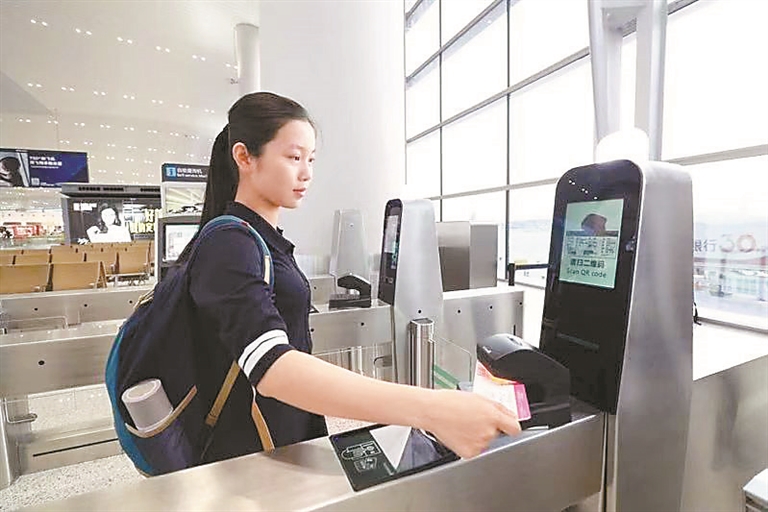
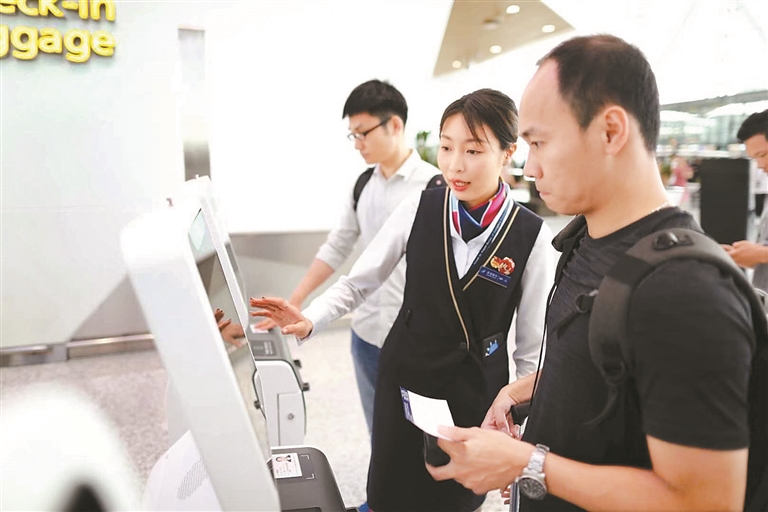
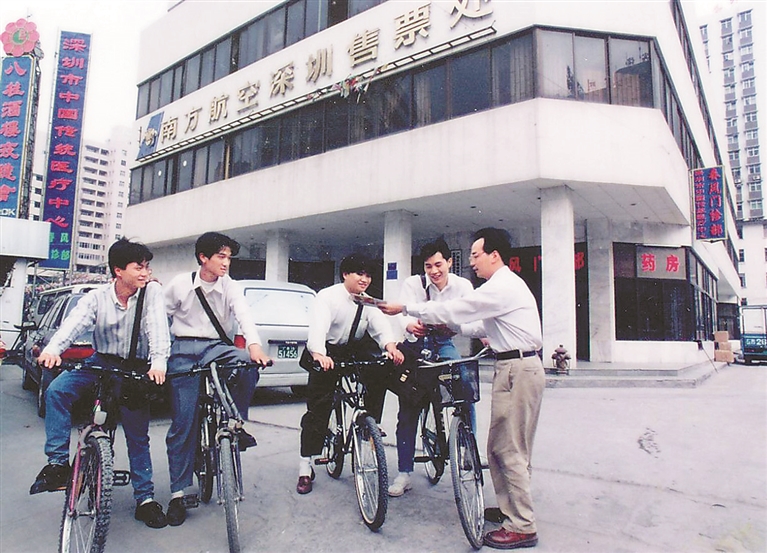
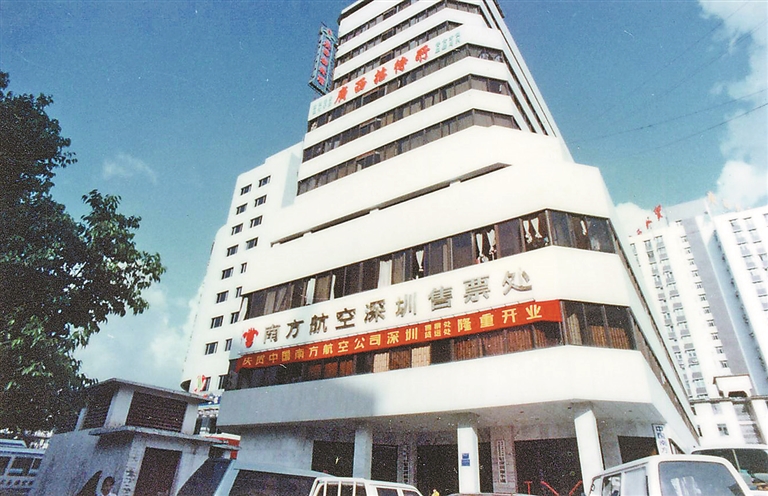
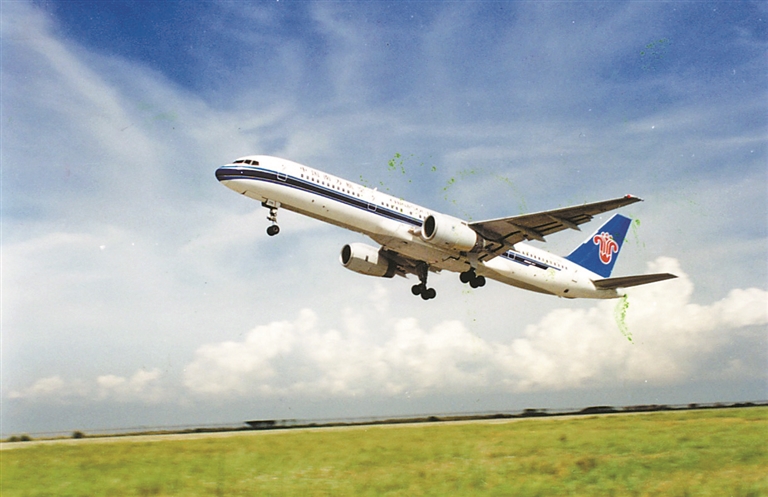
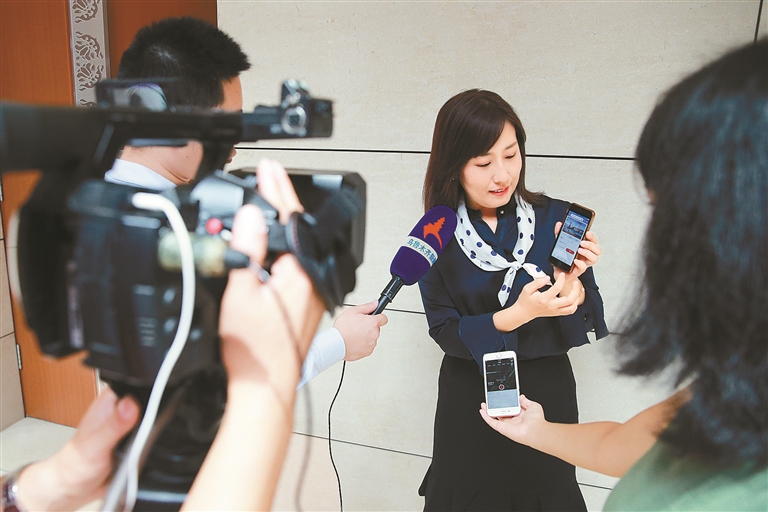
Sun Haiying, Han Ximin ximhan@126.com PURCHASING tickets via mobile phone has become the first choice among most air travelers. With a simple touch of the screen, tickets can be booked without having to make a phone call. Back in the 1990s, it was luxurious to travel by air. A hardcopy air ticket could attract attention and admiration. Air tickets Before 1992, purchasing an air ticket wasn’t as simple as it is today. It required a statement from your working unit. The ticket was in the written form and the price was fixed by the government. The ticket price for all passengers on the same flight was the same. If you lost your ticket, you needed to register at the ticket office and would get the refund one year later. On March 28, 1992, the Shenzhen company of China Southern Airlines was established, operating two routes to Bejing and Shanghai in the initial stage. A dozen ticket offices were set up, and during festivals and holidays long lines often appeared to snap up tickets. In 1993, the State canceled the policy requiring a certificate from the employer, allowing residents to purchase tickets with their IDs or other valid ID documents. With the increasing competition among airliners, the Shenzhen company introduced promotions like 5 percent off one-way trips and 10 percent off round trips. On March 9, 1995, the Shenzhen company set up a ticket delivery office to offer free door-to-door service. On May 1, 1997, the Shenzhen company took the lead in the city by introducing the Easy Boarding check service, and in July 1998, the company realized the integration of ticket-purchasing and boarding services by regrouping ticket offices across the city. The years before 2000 comprised the initial period of the aviation industry in China. Rise of e-commerce At the end of the 1990s, as the Internet became popular, China Southern Airlines began to ride the Internet wave by pioneering e-commerce. In 1999, China Southern Airlines introduced an online payment system to facilitate online ticket sales. The airline led the industry by establishing its official website, www.csair.com, in 2000 and introducing the first e-ticket in China’s aviation industry, replacing the traditional paper ticket. In 2001, e-tickets started gaining popularity. The use of the website and the introduction of e-tickets resulted in closer ties between the airline and its customers by providing convenience. Passengers can now purchase tickets to any corner of the world without necessarily spending time waiting in line at a ticket office. After booking the ticket, a passenger can complete the check-in process with an ID. The use of e-tickets reduced costs for airlines and made the service more environmentally friendly. In 2005, China Southern Airlines introduced a DIY check-in service, and in July 2006, it introduced an online check-in service. In 2009, the company took the lead in China by introducing the first e-boarding card, lifting the curtain on e-travel. In 2014, the airline set up its e-commerce department to service its e-commerce platform and develop new products. Through the development over the past decade, e-commerce now covers the entire process from purchasing tickets to arriving at destinations. E-travel period In 2016, China Southern Airlines adopted e-travel as one of its core strategies and implemented a digital transformation in departments across the company. It aimed to provide a comprehensive e-service via the company’s official mobile service terminal. The e-travel service covers the entire process of traveling. It has six stages, including prior to travel, on the way to the airport, at the airport, in-flight, arriving at the destination and post-arrival period. Before going to the airport, a traveler can purchase pre-paid quotas for luggage, choose seats and reserve certain meals. At the airport, they can check in, receive notices of boarding gate changes or flight changes and access a refund service for extraordinary flight conditions. After arriving at the destination, passengers can follow the app’s guidance to claim luggage and give a review about the trip. At present, passengers using the airline’s app can enjoy DIY service at most airports in China. In 2017, China Southern Airlines introduced a facial recognition boarding system, and in 2018 it added 307 functions to its e-travel app, which had reached 25 million users. The accumulative usage of the app had exceeded 300 million transactions. The company has also regained the lead in technology and number of registered and active users. The e-travel app has basically satisfied the needs of passengers and realized the goal of handling all customer-related business online. China Southern Airlines is pushing the transformation and upgrade of the Internet+ strategy by moving customer-related services to its mobile service platform. It is also exploring the application of facial recognition and artificial intelligence tech in developing products. For example, a passenger from Beijing to Guangzhou doesn’t have to contact any airline employees to complete the trip. He can purchase a ticket, choose a seat, confirm the time of departure, check in and arrive at the boarding gate using the app. After the trip, he can print a receipt using the app. Some new functions will be added to the app through updates. Passengers can also make reservations for tickets and set a desired ticket price, so when the price falls into the range, the app will send a notice to the user to make the purchase. Choosing seats is the most popular of the app’s functions. This May, 260,000 passengers from Shenzhen used the online seat selecting service. China Southern Airlines recently introduced a mileage exchange service. With accumulated mileage, qualified members of the airline can exchange points for commodities at supermarkets, convenience stores and eateries that are partnered with the airline. The service relies on e-wallet, a function which the company introduced recently and requires accreditation. China Southern Airlines is the first airline to offer an off-line mileage exchange service in China. | 
